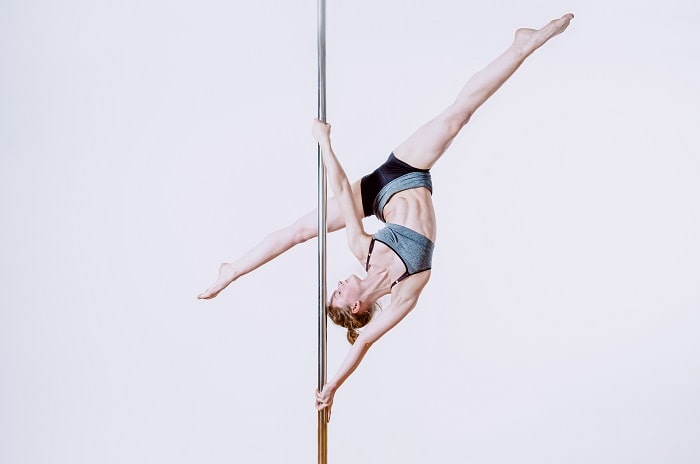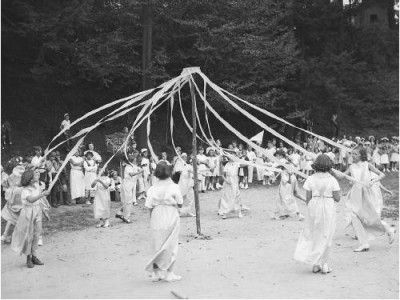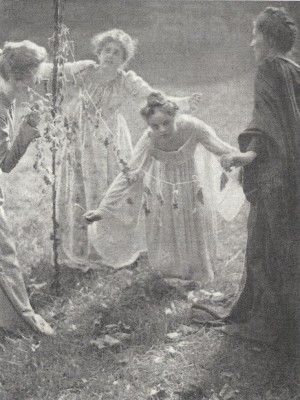The history of Pole Dancing traces back centuries, spanning multiple cultures and traditions before evolving into the fitness and art form we know today. From ancient fitness practices to modern-day competitions, the journey of pole dancing is filled with fascinating transformations.
In this article, we’ll explore the historical roots of pole dancing, its evolution across different eras, and how it has become a celebrated form of artistic expression and athleticism.
The Cultural Roots of Pole Dancing Origin
The pole dancing origin is rich and diverse, spanning various cultures throughout time. However, tracing its exact origins proves to be a challenge, as there isn’t a distinct moment in history that marks its beginning. Instead, pole dancing has evolved and taken shape in different ways across different societies, making it a fascinating and multifaceted art form with a rich historical background.
1. Exotic Dances in Africa and Medieval Europe
According to some theories, the roots of pole dancing lie in the dances of various African tribes. It is said that, in some African tribes, the future wife had to dance on a wooden pole by reenacting the act of sexual intercourse for her husband’s pleasure. Another possible origin is from medieval Europe, where the dancers used the wooden pole to attract the opposite sex!
While there are some references to pole-like dances in African tribes and the use of poles for seduction in medieval Europe, it’s challenging to pinpoint them as the definitive origins of modern pole dancing. Due to limited evidence and historical documentation, the historical information surrounding these theories should be approached with some caution.
2. Mallakhamb – The Indian Connection
While the dances mentioned earlier may have had connections to rituals of sexual intercourse and seduction, it’s important to note that pole dancing encompasses a broader range of practices. One such example is Mallakhamb, a traditional Indian dance form where athletes showcase their acrobatic skills using a wide wooden pole with a wooden edge. Originally intended for male athletes, Mallakhamb served as a training method, much like the techniques employed by contemporary pole dancers such as Jenyne Butterfly and Bambi Richardson. The term “Mallakhamb” itself derives from the words “malla,” meaning wrestler, and “khamba,” meaning pole, reflecting its roots in athleticism and physical prowess.
One of the earliest records of pole-based performances traces back to ancient India. Mallakhamb, which translates to “pole gymnastics,” originated over 800 years ago as a training practice for wrestlers. Using a wooden pole, practitioners displayed incredible strength, flexibility, and balance.
- Significance: Unlike modern pole dancing, Mallakhamb emphasized physical fitness and was deeply intertwined with martial arts traditions.
- Legacy: Mallakhamb is still practiced today and is recognized as a national sport in India.
3. Traditional Chinese Pole Performances
One of the prominent traditional performances in China dates back a thousand years. Male athletes would showcase their skills by climbing two 6-meter-high poles. Similar to Mallakhamb, pole climbing demanded tremendous strength and impeccable balance. This ancient practice exemplifies the enduring legacy of pole-related disciplines, emphasizing the physical prowess and dedication required to master these impressive feats.
4. The Maypole: A Pagan Celebration of Fertility
One of the most common happenings of these kinds was the “Maypole”, a form of folk dance from Germany, England and Sweden.
It dates back to the 12th century and it was a pagan, Roman celebration of fertility with the pole symbolizing the phallus.
Many historians claim that the Maypole was part of the German fertility celebrations. In such cases, the dancers usually danced around a blooming tree. The ritual took place on May 1st, even though in Sweden it was around June 21st or 25th during the summer solstice.
The Maypole consisted of a group of young girls who danced around a pole decorated with flowers and other emblems. It had two forms:
In the first one, the girls just danced around it and this was the most popular version. In the second one, there was an external circle of girls and an internal one. Each of the girls held colorful ribbons which were attached on the top of the pole. The dance included circular steps in order to move the ribbons, weave them around the pole and then undo them or weave a kind of web around the pole.
The Influence of Roman and Celtic Traditions
The execution of this ritual signified the beginning of Bealtaine, an ancient Celtic celebration on May 1st. It is directly connected with the worship of the Roman Goddess called Flora and the Floralia. This celebration became known in England after the Roman conquest and it was actually a 5-day celebration for the 1st of May. Before the Roman invasion of the UK, the Druids, who thrived there and in other western parts of Europe, used to celebrate May 1st as the middle day of the year because, according to Celtic religious beliefs, October was the last month of the year.
Evolution of the Maypole: From Pagan Ritual to Christian Ban
The evolution of the Maypole represents a fascinating journey from its roots as a pagan ritual to its eventual Christian ban. With the rise of Christianity and its efforts to suppress pagan traditions, the Maypole and its associated festivities faced censure. Despite the ban, remnants of this ancient practice endured, and over time, the Maypole transformed into a symbol of secular merriment and cultural heritage, showcasing the rich historical tapestry behind this age-old tradition.
Medieval Maypoles and English Traditions
During the Middle Ages, the common feature among dance events is the pole which is connected to the Maypole. Many medieval artifacts reflect towering wooden poles with ribbons hanging on them placed in the various villages.
One other custom is the English Maypole. People celebrated the beginning of summer and May 1st by placing wooden poles in their gardens which were decorated with flowers. People danced around the pole celebrating the rebirth of nature. Around the 19TH century, colourful ribbons were added on the poles, an Italian element taken from the Italian theatre performances of the era.
Modern Revival and Educational Significance
In the 18th century, the Maypole takes the form of a traditional dance popular in Italy and France. Travelling troupes of that time, include the Maypole in the performances of the theatres of London making it even more popular. Later on, a college for educators approved and adopted the Maypole, which soon spread to most of parts of central and southern England. The dance was admitted as part of the physical education curriculum for girls and it remained popular in primary schools in England and the United States in 1950. Nowadays, the Maypoles are an integral part of many celebrations in elementary schools.
5. Pole Dancing in the Circus Tent
Amid the Great Depression in the 1920s USA, pole dancing found its place within circuses, captivating audiences with sensual choreographies. Female dancers gracefully moved and performed on the poles that supported the circus stage. As time went on, these unique performances gained immense popularity, eventually becoming the cornerstone of the Burlesque and cabaret scene in the 1950s. Since then, pole dancing has been synonymous with sensual dancing and striptease. Dive deeper into the captivating evolution of pole dancing, tracing its path from the circus tent to its modern expression in our article, “The Evolution of Pole Dancing: From Circus Sensuality to Modern Expression ” Discover how this art form has transformed and evolved over the years, captivating hearts and minds along the way.
Modern Pole Dancing: Evolution into Fitness and Art
1. The 1980s: The Birth of Pole Fitness
During the 1980s, pole dancing began to evolve and incorporate elements of striptease and sensual dance, particularly in Canada and the USA. This evolution contributed to the popularity of pole dancing as a form of entertainment and fitness. However, it’s important to note that the specific details and timeline of this development may vary, and pole dancing’s history is still a subject of ongoing research and interpretation.
2. Fawnia Mondey’s Contribution
Fawnia Mondey, a dancer in Canada, played a significant role in the development of pole dancing as it is known today. In 1994, after being hired as a dancer in Exotic Dance, Fawnia Mondey began focusing on combining sensual dance moves with athletic and sportive elements in pole dancing. Her efforts helped popularize this fusion and played a part in shaping the modern form of pole dancing. Fawnia Mondey is considered a pioneer in the field and has made substantial contributions to the art and sport of pole dancing. She was the first to present the first DVD about learning the art of Pole Dancing.
3. Pole Dancing as a Competitive Sport
Today, pole dancing has evolved into a legitimate sport with international competitions and governing bodies. Fitness enthusiasts and athletes alike recognize it for its physical demands and artistic expression.
The Evolution of Pole Fitness
In addition to the mentioned developments, there have been several advancements and developments in the sport of pole dancing over the years. Some of these include:
Professional Competitions
Pole dancing has evolved into a competitive sport with numerous international and national competitions. These competitions showcase the skills, strength, and creativity of pole dancers from around the world, helping to elevate the sport’s profile and establish it as a recognized discipline.
Pole Dancing Fitness Classes
The fitness aspect of pole dancing has gained significant popularity. Many fitness studios now offer pole dancing classes as a fun and effective workout, attracting individuals of all fitness levels. These classes focus on building strength, flexibility, and coordination while incorporating dance and acrobatic elements.
Pole dancing has become a full-body workout that empowers individuals both physically and mentally. For those ready to begin their journey, Rio Linda pole dancing studio provides a welcoming space with expert instructors and structured classes suited for all levels.
Pole Dance Studios and Schools
The establishment of dedicated pole dance studios and schools have provided a structured and supportive environment for enthusiasts to learn and develop their skills. These establishments offer a range of classes, workshops, and training programs tailored to different levels, from beginners to advanced practitioners.
Emphasis on Technique and Safety
With the growth of pole dancing as a sport, there has been a greater emphasis on proper technique and safety. Training programs and certifications are available for instructors to ensure they have the necessary knowledge to teach safely and effectively. Safety equipment, such as crash mats and grip aids, are also commonly used to reduce the risk of injuries during training and performances. Safety is crucial in pole dancing, especially when performing advanced moves. Make sure you’re practicing with the best equipment.
At Vertical Wise Shop, we offer high-quality crash mats that provide the protection you need.
Artistic Expression and Choreography
Pole dancing has expanded beyond its sensual origins and now incorporates various styles of dance and artistic expression. Dancers are pushing boundaries with innovative choreography, blending different dance genres, and incorporating storytelling and emotions into their performances.
Inclusion in Fitness and Dance Communities
Pole dancing has gained recognition and acceptance within the wider fitness and dance communities. It is now considered a legitimate form of exercise and artistic expression, leading to collaborations, workshops, and cross-disciplinary events that bridge the gap between pole dancing and other dance styles.
These developments have contributed to the growth and evolution of pole dancing as both a sport and an art form, further establishing its credibility and expanding its reach to a broader audience.
FAQs About the History of Pole Dancing
1. What is the pole dancing origin?
Pole dancing has roots in ancient fitness traditions like Mallakhamb in India, Chinese acrobatics, and European Maypole dancing.
2. Who invented pole dancing?
Modern pole dancing evolved from various cultural influences, with no single inventor. However, figures like Fawnia Mondey contributed to its popularity as a fitness form.
3. How has pole dancing evolved?
From ancient strength training to modern fitness and artistic performances, pole dancing has transformed into a respected discipline practiced globally.
4. Is pole dancing only associated with exotic dance?
No, today pole dancing is recognized as a full-body workout that combines strength, flexibility, and creativity, appealing to fitness enthusiasts worldwide.
Conclusion: The Rich Heritage of Pole Dancing
The history of pole dancing is a testament to human creativity, resilience, and adaptability. From ancient rituals to cutting-edge athleticism, pole dancing continues to break boundaries and redefine itself. As we celebrate its past, we look forward to seeing how it evolves in the future.
Celebrate your passion for pole dancing with our exclusive range of mugs and notebooks featuring stunning pole dance designs. Perfect for your morning coffee or jotting down your choreography ideas, check them out at our Etsy shop.
History of Pole Dancing References:
- Lyden, Elizabeth. “Pole Dancing is a Sport, Not a Strip Club Striptease.” Policymic.com, September 2011. Web. Accessed 14 April 2013.
Read the article - GraecoMuse Blog – Exploring cultural influences on pole dancing history.
Visit website - Diary of a Wrinkle – A personal exploration of dance and self-expression.
Read more - Red Nights Blog – Historical perspectives on pole dancing origins.
Read the blog - Historical Harmonies – A map of pole dancing origins and its cultural significance.
View resource - Academia.edu – Research paper: In Society Mallakhamb: An Investigation into the Indian Physical Practice of Rope and Pole Mallakhamb.
Read the study - ChinaCulture.org – Insights into traditional Chinese pole performances.
Visit website - Stencell, A.W. “Girl Show: Into the Canvas World of Bump and Grind.” A comprehensive look at the history and evolution of exotic performances.











